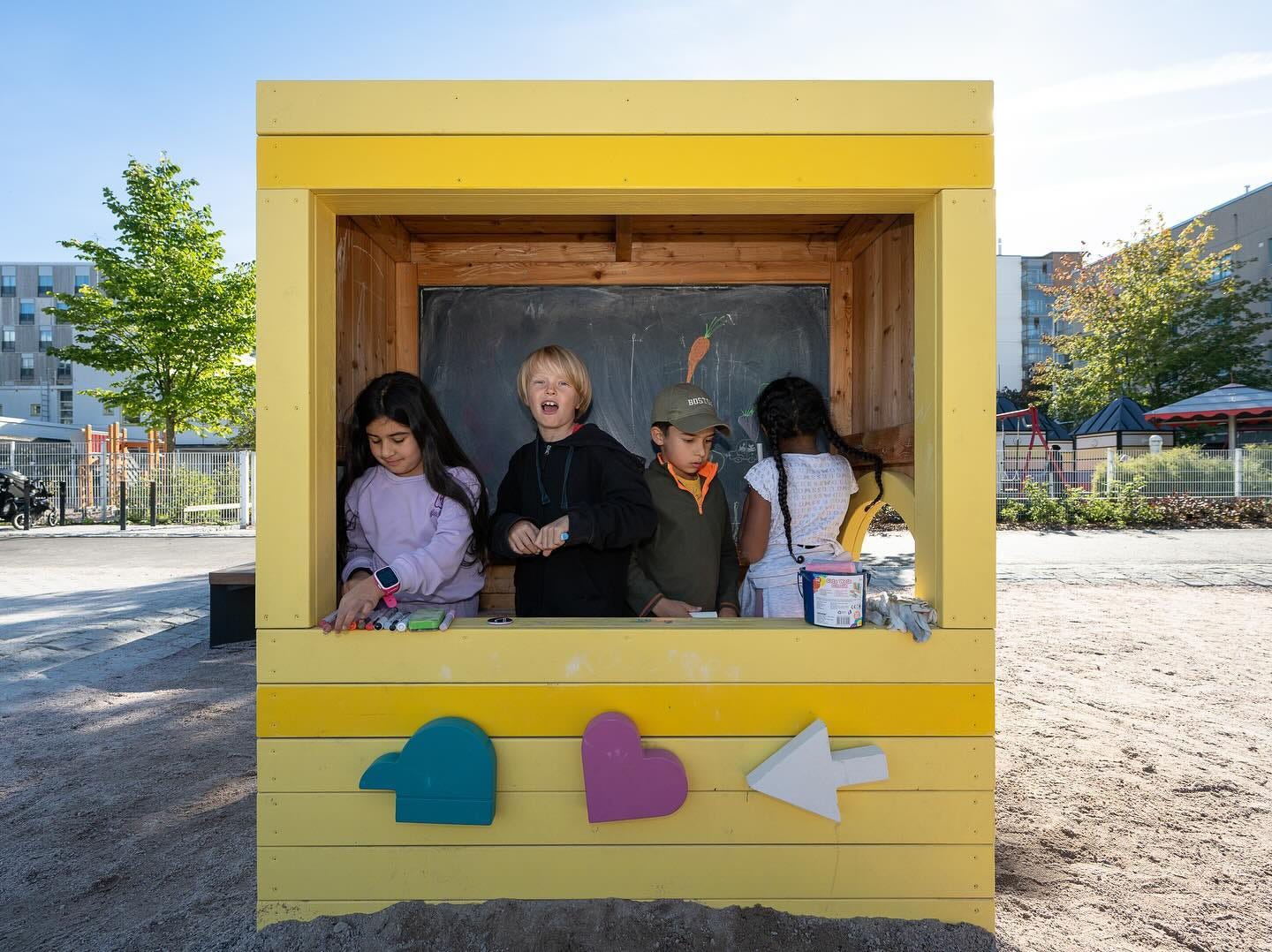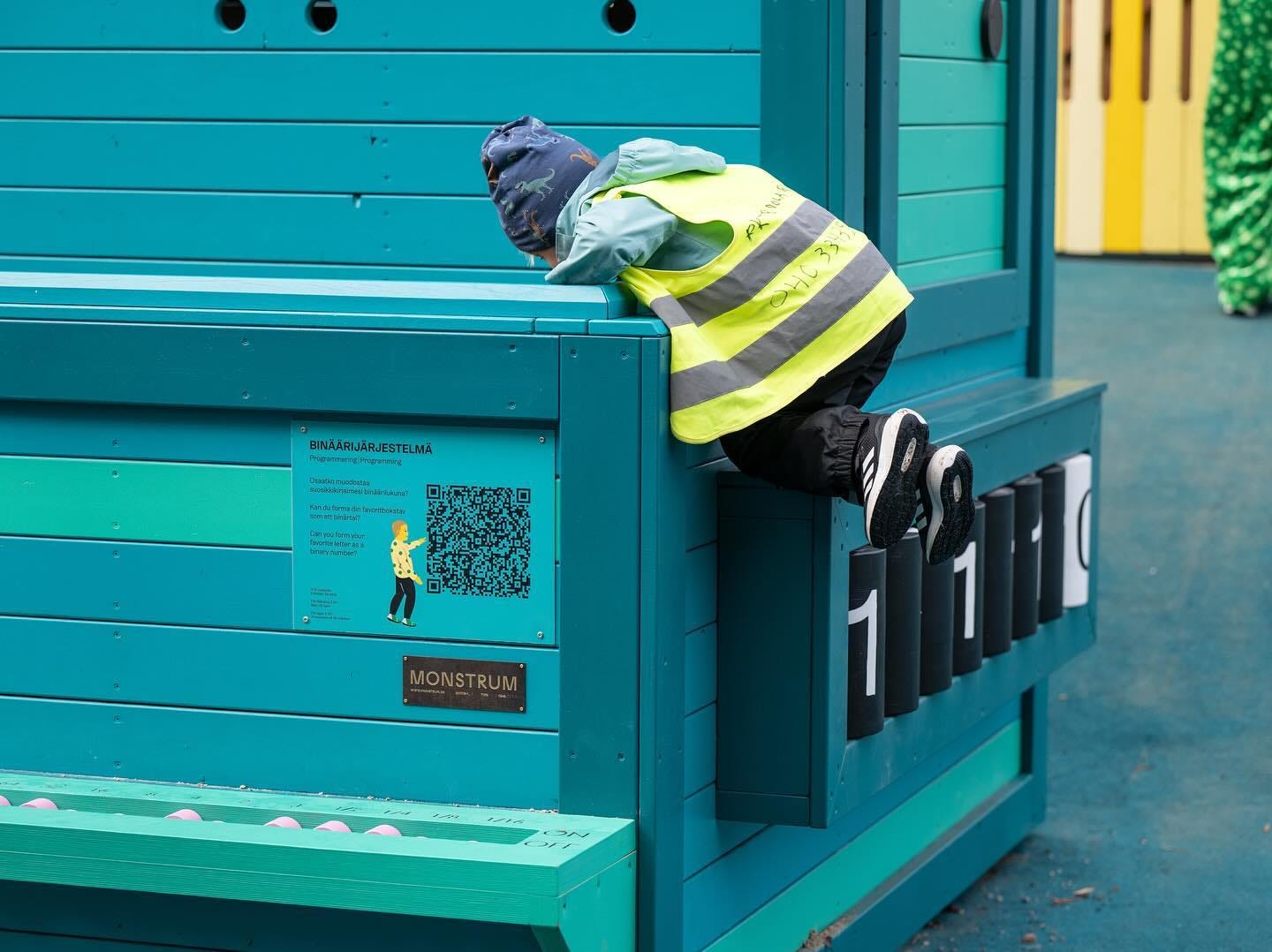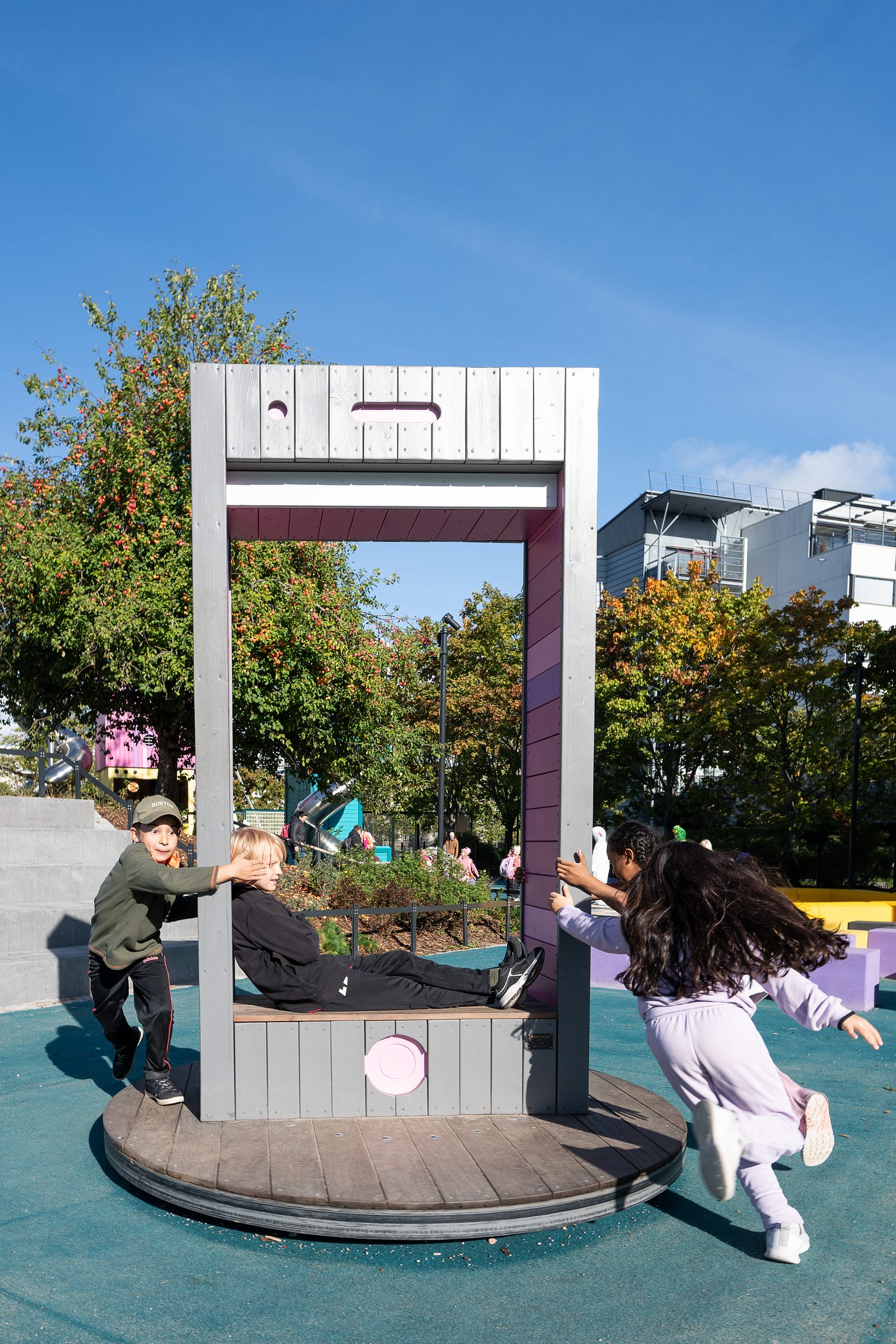No. 86 — A playground to outlast the feed
walk through it, crawl up it, roll down it, swim in it
My name is Linda. I write a bi-weekly newsletter about computer science, childhood, and culture. All pictures by Sakari Röyskö and the city of Helsinki.
I meet an old friend for lunch. I tell her how the playground is shaping up: how exciting it is to see real kids hanging from the play structures and to plan materials for educators taking their classes on excursions. “It must be complicated designing for kids who spend a third of their day on screens,” she remarks. For many of the children visiting the playground, the most natural public space to meet up is a Fortnite lobby. For them, sandbox mode means a game mod, not a box filled with sand.
The only way I can truly understand something is by physically engaging with it. I need to walk through it, crawl up it, roll down it, swim in it. I use my fingertips—not just my brain—to observe and solve problems.Unfortunately, computers don’t allow for that. Over the past four years, I’ve been working to make the abstract ideas of computer science tangible, even when you’re on your hands and knees.
The playground has now been open for a few weeks. Hearing the feedback is both humbling and reassuring. Children swarm the playground. They jump, swing, crawl. They break rules and come up with new ways to play. They collaborate and resolve conflicts. Maybe they even learn something.
A big, warm thank you to everyone who worked tirelessly on this project: Näkymä landscape architecture and Ana & Tiina, Monstrum & Kasper, the City of Helsinki, especially both the education and parks & recreation departments. Special thanks to city champions Hanna Harris and Jan Vapaavuori, and to Emma Alftan, who always embarks on these crazy projects with me.
Any code I’ve written, any glib digital creation, disappears into the infinite feed. But a playground will stubbornly stand for the next twenty years, pointing to big ideas in computer science. It’s something I think about often.
In the next few editions of this newsletter, I’ll share more about the process, the pedagogical layers, and how this project has shaped my thinking around public spaces (and what I hope to do next!) In the meantime, here’s a small tour of the playground:
And if you're interested, here are some older posts about the project:
No 21 - Playgrounds 🤖 Public Spaces 📐 Architects for the very young
No. 22 — Paris 🇫🇷🗼 Pattern Language 🏙️ Kid City
No. 36 — Play/Pause ⏯️ My phone stuck its tongue out 😝 WingspanNo. 65 - Playground abacus ⫶ Stochastic Parrot ⫶ Parallel Computing in the Ancient World
No 76 — Playground construction ⫶ Worldbuilding ⫶ Jean Bartik
No. 85 — Playing in the streets ⫶ Pop-up computing ⫶ Shelf space











This warms my heart so much! I spend a lot of time thinking about how to teach students about computers and computer science, but without the screens. I look forward to seeing this in person with my own children some day!